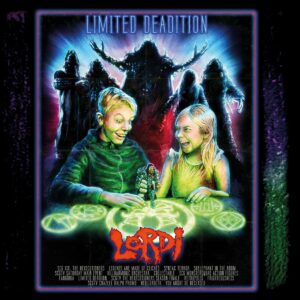Legendary Music Producer Phil Ramone Dies at 79

A former violin prodigy and expert engineer, he worked with Dylan, Sinatra, McCartney, Bennett, Charles, Streisand, Simon, Joel and Bacharach and spent more than 50 years in the business.
Phil Ramone, the instinctive music producer whose mixing mastery for Frank Sinatra, Barbra Streisand, Bob Dylan, Ray Charles, Paul Simon and Billy Joel helped fashion some of the most sumptuous and top-selling albums of his era, has died. He was 79.
The 14-time Grammy winner and 33-time nominee once dubbed “The Pope of Pop” was hospitalized in late February with an aortic aneurysm in New York and died Saturday morning at New York Presbyterian Hospital, according to Ramone’s son Matt.
A native of South Africa who at age 10 performed as a violinist for Queen Elizabeth II, Ramone spent years working as a songwriter, engineer and acoustics expert in New York before charting a path that would make him a trusted studio partner in the eyes (and ears) of the industry’s biggest stars.
Among the albums on which he worked were Streisand’s 1967 live A Happening in Central Park; Paul & Linda McCartney’s Ram (1971), sandwiched between the Beatles and Wings eras; Dylan’s aching Blood on the Tracks (1975); Simon’s pop classic Still Crazy After All These Years (1975); Joel’s critical and commercial breakthrough The Stranger (1977); Sinatra’s last-gasp Duets (1993), a model of technical wizardry; and Charles’ final album, the mega-selling Genius Loves Company (2004).
Ramone served as a songwriter in New York’s famed Brill Building music factory and worked early on with Quincy Jones, Tom Dowd, Creed Taylor, Jerry Leiber & Mike Stoller and Burt Bacharach & Hal David, among others. In 1959, he launched the A&R Recording studios on Seventh Avenue in New York, where Blood on the Tracks and so many other classics were recorded.
Asked to describe his philosophy as a producer, Ramone told Sound on Sound magazine in 2005: “I served a long time as an engineer and watched many famous producers work, and I decided on the personality that came most easily to me, which is the more relaxed; to give artists encouragement when needed.
“Players are like prodigies, thoroughbreds,” he added. “You have to handle them with care.”
Born on Jan. 5, 1934, Ramone at age 3 began studying the piano and violin, and he attended the Juilliard School in New York as a teenager. Although he was an accomplished performer and composer, he was attracted to the technical side of music and became a wizard working with the dials.
In 1964, Ramone engineered the classic bossa nova album Getz/Gilberto, from American saxophonist Stan Getz and Brazilian guitarist Joao Gilberto. It would become one of the biggest-selling jazz albums of all time and earn him his first Grammy, for best engineered recording. It also won the album of the year Grammy.
Later in the decade, he worked with folk superstars Peter, Paul and Mary, then won another Grammy in 1969 as co-producer of the original Broadway cast album of Promises, Promises, with music and lyrics by Bacharach and David.
Ramone’s career reached another level in 1975 when he produced Simon’s Still Crazy After All These Years — which featured the No. 1 single “50 Ways to Leave Your Lover” and won Ramone a Grammy for album of the year — and Blood on the Tracks.
About the Dylan album, Ramone said: “It turned out to be the best four days of what Bob Dylan does, which is he wanders from song to song, sometimes coming back to the first one. Other than changing the roll of tape, you just had to let it all happen.”
In 1977, he produced Kenny Loggins’ Celebrate Me Home, Phoebe Snow’s Never Letting Go and Joel’s The Stranger, which kicked off a seven-album, decade-long relationship with the Long Island-raised singer-songwriter. He and Joel were “both lunatics,” he once said.
For the screeching tires on “Movin’ Out (Anthony’s Song)” from The Stranger, Ramone recorded bassist Doug Stegmeyer’s Corvette peeling out, taping a microphone to the tailpipe. He also added a bit of echo to Joel’s whistling throughout the album.
“There’s nothing like the challenge of devising and reproducing an effect you’re looking for,” Ramone wrote in his 2007 book, Making Records: The Scenes Behind the Music. “Sometimes that chase is more exciting than the catch.”
Ramone won the record of the year Grammy for Joel’s “Just the Way You Are” from the album (after removing a “cha-cha-cha” background from the song), captured album of the year for the follow-up 52nd Street and was named producer of the year in 1980 after guiding the rock-infused Glass Houses, which featured Joel’s first chart-topping single, “It’s Still Rock and Roll to Me.”
On Oct. 1, 1982, 52nd Street became the first commercially released compact disc, and Ramone later received a Technical Grammy for his lifetime of innovative contributions to the industry.
In 1993, Ramone produced Duets, a comeback album for Sinatra. The legendary singer never sang in the same studio with his duet partners, who included Streisand, Natalie Cole, Aretha Franklin, Tony Bennett, Bono and Kenny G. Ramone used an EDNet fiber-optic system to record the artists in different locations in real time.
The first of two Sinatra Duets albums sold more than 3 million copies in the U.S. and made it to No. 2 on the Billboard albums chart.
For Genius Loves Company, Ramone and fellow producer John Burk provided a clean, retro setting for the pop classics sung by Charles with James Taylor, Bonnie Raitt, Elton John, Norah Jones and others. The album, recorded over a period of nine months and released in August 2004 — two months after Charles’ death — earned triple-platinum status, made it to No. 1 and raked in eight Grammys.
“If Ray is looking upon us now, he’s just made his career last another 50 years,” Ramone said as he accepted the Grammy for Album of the Year.
Ramone also produced Bennett’s Duets II, the 2011 release famous for the crooner’s collaboration with Amy Winehouse. With that album, Bennett became the oldest living artist to debut at No. 1 on the Billboard 200.
Other Ramone-produced albums include Lesley Gore’s I’ll Cry If I Want To (1963), Julian Lennon’s debut Valotte (1984), the Broadway cast album for Passion (1994), Liza Minnelli’s live Liza’s Back (2002), Rod Stewart’s It Had to Be You: The Great American Songbook (2002) and recent works from George Michael, Dionne Warwick and Glee star Matthew Morrison.
Ramone recorded Streisand and Kris Kristofferson live during filming for A Star Is Born (1976) and co-wrote “Imagination,” sung by Laura Branigan in Flashdance (1983), good for another Grammy. He also contributed to the films Midnight Cowboy (1969), Ghostbusters (1984) and Beyond the Sea (2004), with Kevin Spacey acting and singing as Bobby Darin.
Ramone also recorded Marilyn Monroe’s boozy rendition of “Happy Birthday to You” sung to President John F. Kennedy in 1962 and received an Emmy in 1973 for his work as an audio designer on the NBC special Liza With a Z.
In a Recording Academy statement confirming his passing, the Grammy organization also credited Ramone as “a pioneer of audio technological developments — creating new innovations for the compact disc and surround sound technologies.”
In an interview with Music Radar in November, Ramone credited his ability to seize upon spontaneity as one reason he became such a prolific hitmaker.
“You have to be able to run as fast as the artist, capture the magic early on,” he said. “After a few takes, people start intellectualizing what they’re doing, and it loses something. What’s special happens right away — so you have to be ready for it.”
In addition to his son Matt, Ramone is survived by wife Karen and sons BJ and Simon.
Source: Hollywood Reporter


